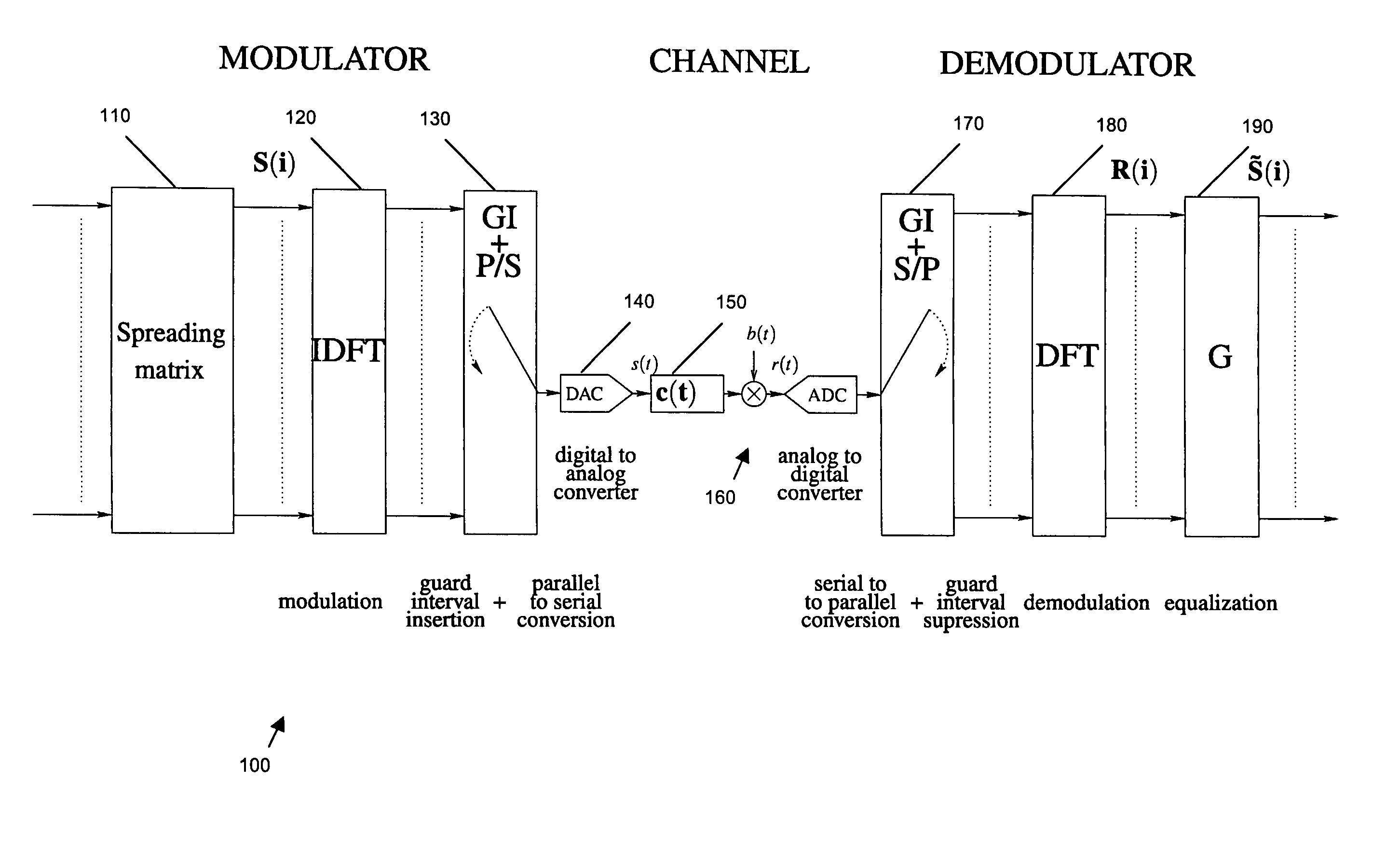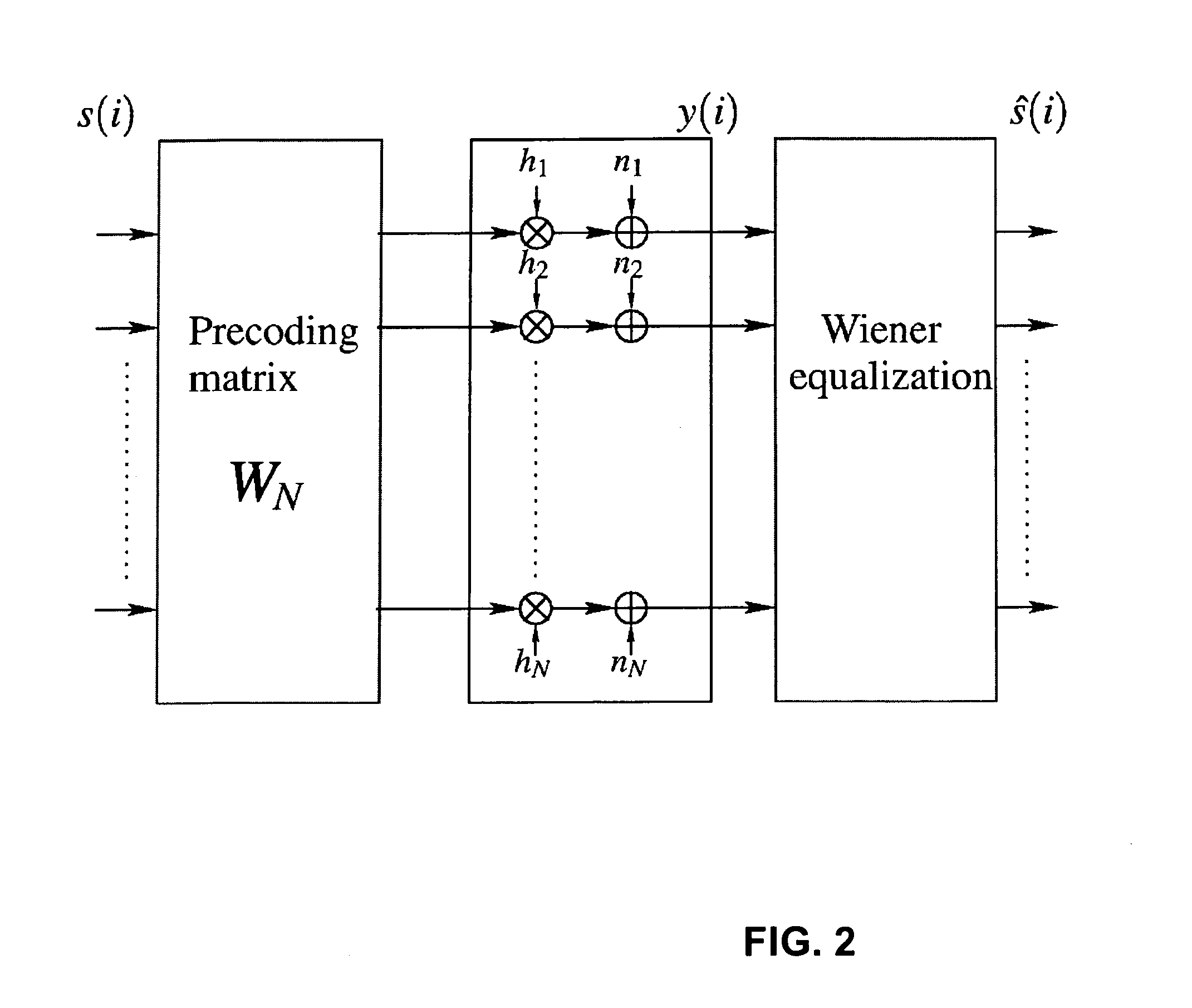Reception of multicarrier spread-spectrum signals
a spread-spectrum signal and multi-carrier technology, applied in the field of multi-carrier wireless communication systems, can solve the problems of huge decoding complexity, no existing standards will be able to meet these requirements, and v-blast algorithms are not suited to conventional sofdm systems
- Summary
- Abstract
- Description
- Claims
- Application Information
AI Technical Summary
Benefits of technology
Problems solved by technology
Method used
Image
Examples
Embodiment Construction
)
[0023]As will be explained below, the decoding algorithm to be described significantly enhances performance compared to MMSE equalized SOFDM scheme, with a complexity excess that is marginal compared to V-BLAST decoding strategies.
[0024]Consider the dimension N×1 vector s representing the block of complex valued symbols to be transmitted (each one belonging to a finite alphabet called constellation, e.g., QPSK, QAM, etc.). The overall Spread-OFDM transmission system of interest 100 depicted in FIG. 1 includes, in a transmitter, a spreading matrix module 110, a module 120 providing modulation, a module 130 providing guard interval insertion and parallel-to-serial conversion, and a digital-to-analog converter 140. The transmitter is coupled via a wireless communication channel 150 to a receiver including a mixer and analog-to-digital converter 160, a module 170 providing guard interval suppression and serial-to-parallel conversion, a module 180 providing demodulation, and a module 19...
PUM
 Login to View More
Login to View More Abstract
Description
Claims
Application Information
 Login to View More
Login to View More - R&D
- Intellectual Property
- Life Sciences
- Materials
- Tech Scout
- Unparalleled Data Quality
- Higher Quality Content
- 60% Fewer Hallucinations
Browse by: Latest US Patents, China's latest patents, Technical Efficacy Thesaurus, Application Domain, Technology Topic, Popular Technical Reports.
© 2025 PatSnap. All rights reserved.Legal|Privacy policy|Modern Slavery Act Transparency Statement|Sitemap|About US| Contact US: help@patsnap.com



